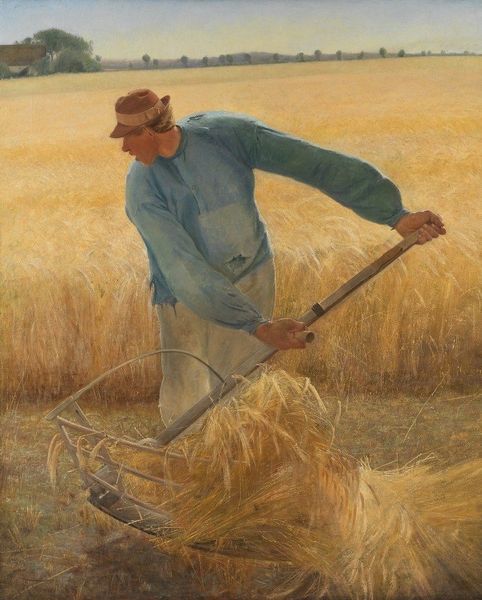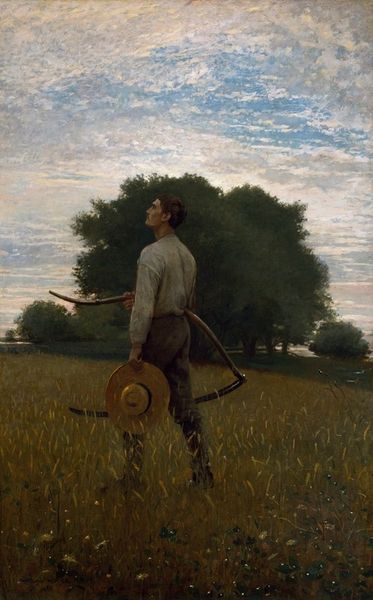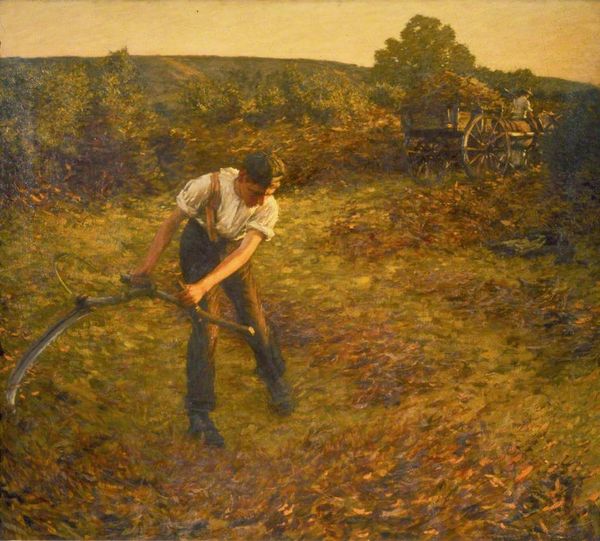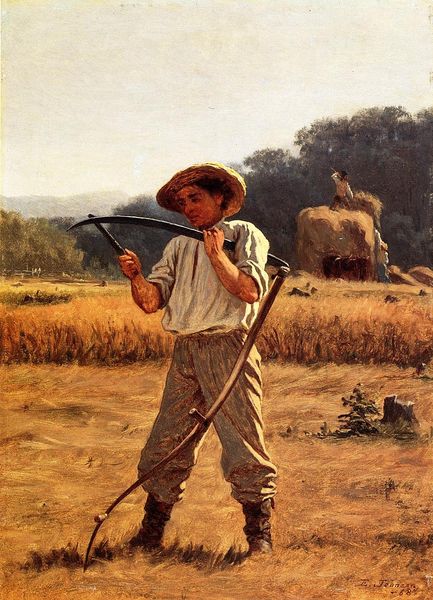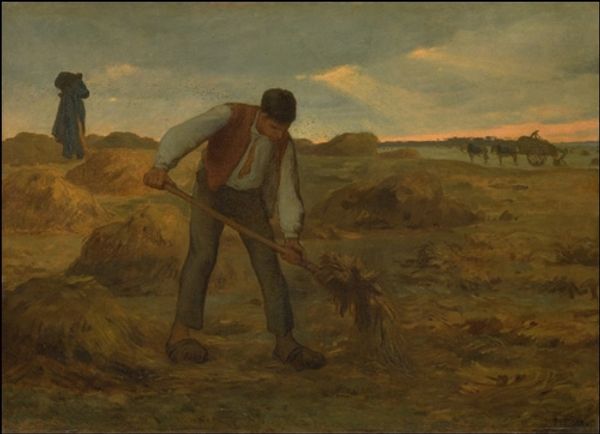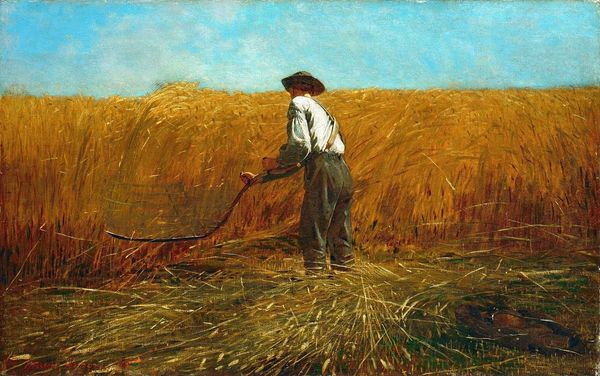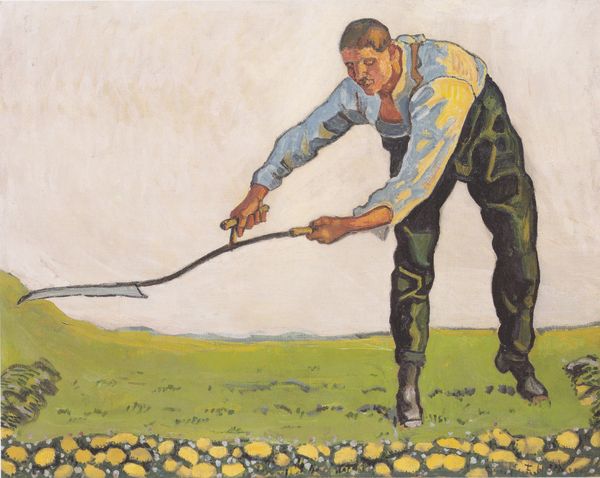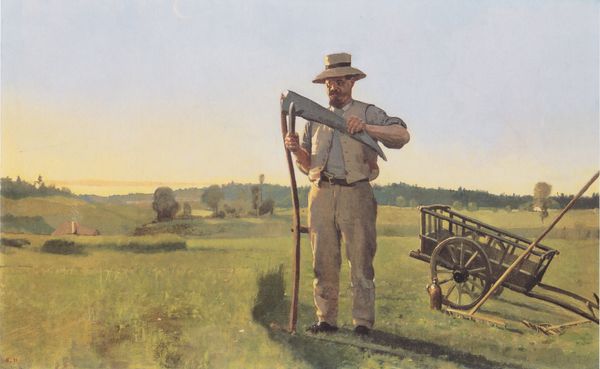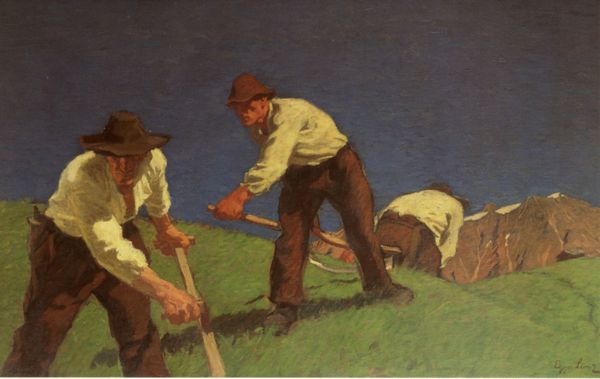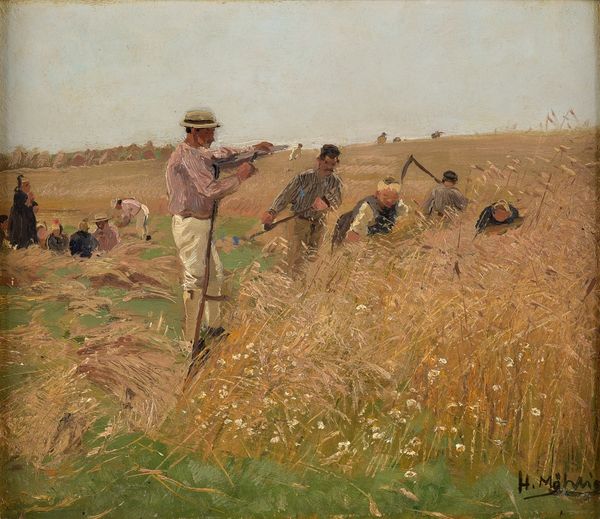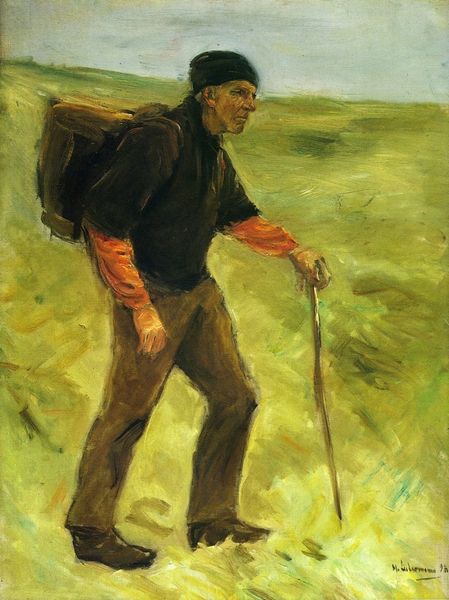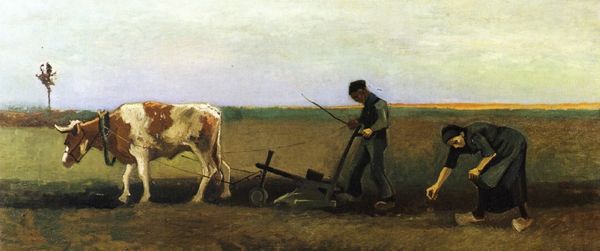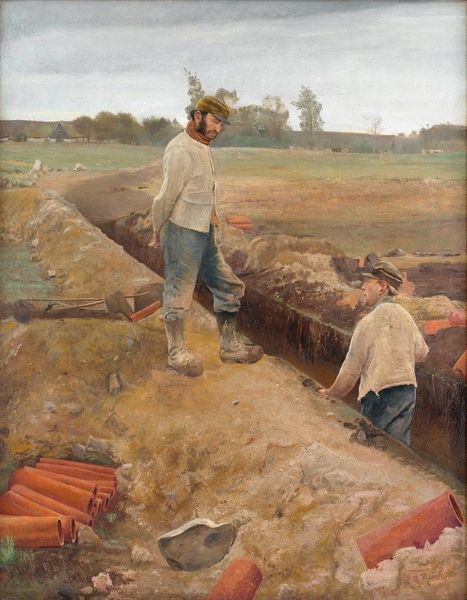
Dimensions: 91 x 64 cm
Copyright: Public domain
Curator: Here we have Pekka Halonen’s “Mowers men,” created in 1891. It's a compelling scene rendered with oil on canvas. The work finds itself in a private collection. What strikes you first about it? Editor: It has a certain…stillness, despite depicting labor. There's a pensive mood, almost melancholic, set against the bright, summery field. The primary figure seems caught between work and some inner thought. Curator: Halonen does that often; grounds his subjects with immense sensitivity. Considering its time, one could view this as more than a simple depiction of rural life. The late 19th century was full of burgeoning nationalist movements. Could Halonen be romanticizing the Finnish countryside, subtly promoting a unique cultural identity rooted in nature and its traditions? Editor: Absolutely. You can’t divorce this image from the broader socio-political landscape of the time. This isn’t just a picture of men mowing. Look at the class implications, even: bare feet grounded to the soil, the emphasis on manual labor. Who is Halonen representing, and who is he choosing *not* to represent? And to what end? It touches upon questions of labor, land, and belonging, things of importance to social discourse at the time. Curator: And even his embrace of *plein air* painting enhances that feeling, right? Being outside, embedded in the actual landscape while capturing its essence – a way to show it honestly, without idealizing it within a studio. But that front figure is undeniably idealized: the artist's eye gives a beauty and noble cast to his mien. Editor: But I also think there’s something deeply egalitarian here. The composition gives these mowers a human dignity—we are seeing and, in some sense, acknowledging their role, a slice of rural existence which otherwise might disappear unnoticed into history. It demands a sort of recognition. Curator: You're right. Perhaps Halonen aimed to capture more than just an idyllic scene; to immortalize a way of life, and elevate the ordinary worker to a place of prominence, or at least acknowledge it as it disappears into progress. It's lovely to imagine. Editor: Yes, exactly, a call to both see and remember. A beautiful painting can speak volumes about identity, labor, and cultural memory. It prompts us to question whose stories get told and how we remember our histories. Curator: I see so much beauty and thoughtful meditation there, in a few honest strokes.
Comments
No comments
Be the first to comment and join the conversation on the ultimate creative platform.
